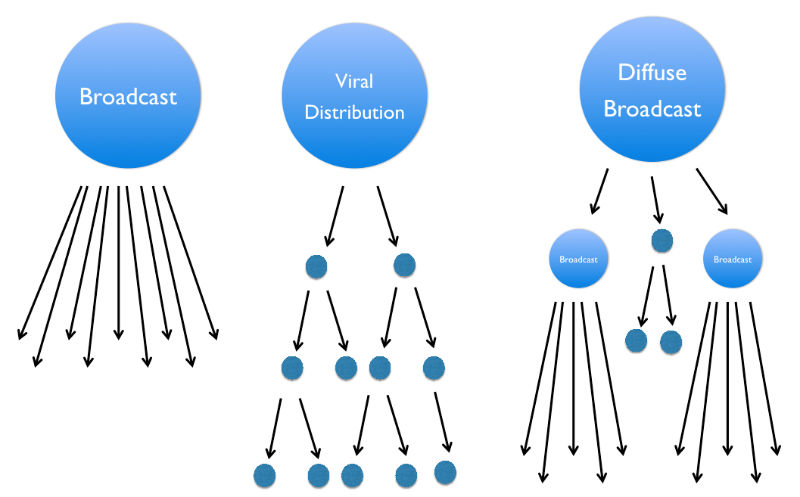Marketing in an Age of Distraction: 4 Key Takeaways from Hit Makers
Among the maxims that generally ring true for my life: books are for escaping (i.e. exclusively fiction) and articles, magazines and newspapers are for learning (i.e. nonfiction). I decided to challenge this in 2018 with Hit Makers: The Science of Popularity in an Age of Distraction.
Written by The Atlantic senior editor Derek Thompson and published last year, Hit Makers examines how psychology and market forces come together to make things popular. We learn the convergence of factors that led to such cultural titans as Star Wars, 50 Shades of Grey, Bumble and Barack Obama. More importantly maybe, we also learn about the near-hits that, for one reason or another, didn’t make the cut but left their mark in other ways (John Carter and Caillebotte, anyone?).

For a marketing mind like mine, these tales of hits and misses have turned out to be just as compelling as any novel I’ve read recently. More than that, they’ve provided lessons—or at least crucial cultural, psychological and market factors to be aware of—that I won’t forget anytime soon.
While I’m inclined to consider Hit Makers modern-day required reading for anyone who occupies a place in the worlds of marketing or popular culture, I’ve put together a cheat sheet of what I think are the most important takeaways from the book. Treat this as an appetizer—morsel-sized food for thought—to whet your appetite for the main course. And by that, I mean: Read this book.
4 Key Takeaways from the Hit Makers
#1. The MAYA Rule
The man credited as being the founder of modern design, Raymond Loewy spent a 50-year career leaving his mark on industrial, architectural, interior, product and graphic design. But while his work crossed disciplines, his guiding philosophy was a singular one. He called it MAYA, or Most Advanced Yet Acceptable.
What does MAYA mean exactly? Basically, it means that there’s a bullseye somewhere between familiarity and futuristic where comfort and surprise come together to create something that’s undeniably interesting for people. Siting everything from Loewy’s Studebaker designs to Spotify’s Discovery Weekly playlists to ESPN’s shift to all-sports programming in the late ’90s, Hit Makers points to each as an “aesthetic aha” that takes something we know (cars, playlists, cable channels) and presents them back to us in a way that’s just new enough to be compelling.

The Takeaway: Whether you’re developing a song, a new product or a marketing campaign, hit that MAYA sweet spot to increase your chances of producing a hit.
#2. The Power of Repetition
For brand managers or marketers, this one has its roots in a familiar topic: repetition. While getting your message in front of your audience numerous times is still essential to its success, Hit Makers looks at repetition on a smaller scale—within the message itself.
Thompson points to the power of repetition in music writing (think verse-verse-chorus-verse-chorus-bridge) to show how poets (Homer), writers (Shakespeare) and orators (J.F.K.) used repetition within their work (rather than repetition of their work) to have more impact and be more memorable.
This ‘musical language,’ as Thompson calls it, comes in many familiar forms. Grammarists will no doubt know the technical terms for these runs of rhythmic wordplay, but we can all appreciate the earworm qualities of these rhetorical devices made famous through quotes such as:
“Government of the people, by the people, and for the people.” — Abraham Lincoln
“Drill baby drill!” — Sarah Palin
“Ask not what your country can do for you, ask what you can do for your country.”
— John F. Kennedy
The Takeaway: Writers of any kind should make careful use of musical language in headlines, taglines, messaging and generally wherever they want to pen something catchy.
#3. The Fashion of Communication
Thompson dedicates a chapter to the trifecta of factors that dictate popularity in fashion: choice, economics and marketing—only to rip them out from under us by asking, what if you could study popularity in a world of infinite choices, universal prices and no advertising. What emerges is a fourth factor, social influence. And once the “S” word is introduced, a conversation about Facebook and other digital communication platforms like it are never far behind.
Since 2000, en vogue communication options have skyrocketed. It’s left marketers racing to join the conversation ever since. And most of the time, we get there too late and end up coming off like we’re trying too hard. Like clothing, our forms of communication now go through the ebbs and flows of the hype cycle and it can be a fool’s errand to try and keep up.
The Takeaway: If you don’t need the latest social media platform to reach your audience, maybe just leave it be. Focus your efforts where it matters, not where it’s trendy. Leave that to the cool kids.
#4. The Viral Myth
Speaking of social media, Hit Makers also tackles the common misconception about how something goes viral. Maybe it’s the word ‘viral’ itself, which conjures Outbreak-like ideas of a patient zero who infects two people, who in turn infect four people and before we know it, the spread has reached thousands upon thousands and we have another ALS ice bucket challenge dominating our news feeds.
The reality is none of the big ‘viral’ sensations we think of, be it ice baths or Anastasia and her 50 Shades of Grey, get popular this way. They go viral because they get a massive boost from a patient zero with a big audience. The ice bucket challenge was broadcast to thousands via Oprah and LeBron James; 50 Shades from a trifecta of New York socialites and the author’s own popularity within fan fiction circles.

These one-to-one-million boosts supercharge the spread of popularity in ways that textbook viral spread never could.
The Takeaway: When strategizing for a product or campaign launch, think about how you can generate those key boosts. Target a combination of influencers, online communities and press outlets to give you the best chance of really going viral.
These four pro-tips are just the tip of the iceberg. Hit Makers dissects some of the biggest cultural sensations of recent times to break down how they became what they became. Critics are calling Thompson’s book the unofficial follow-up to Malcolm Gladwell’s Outliers. In the spirit of Gladwell’s 10,000 hours rule, practice makes perfect and this book will help make sure all that time is worth it. Spend a few of those hours reading Hit Makers and you’ll be that much smarter about how you spend the other 9,990.
Have you read Hit Makers? Have your own thoughts on any of the tips we’re sharing here? Drop us a note in the comments and let us know what you think.
Campaign Crush: Save the Food
Marketing to Women: The Dos and The (Please Definitely) Don'ts
Wrapping Up 2017










